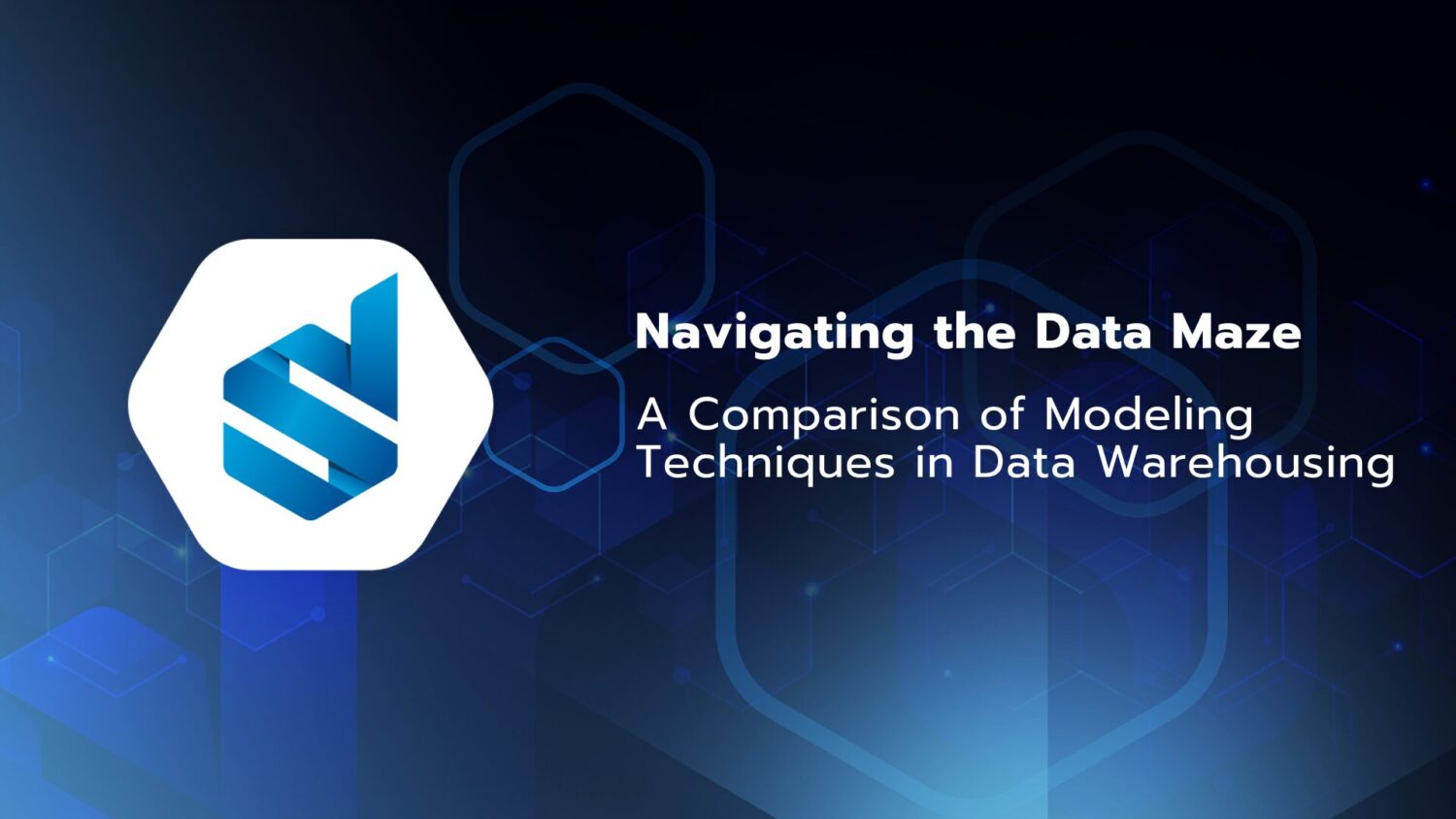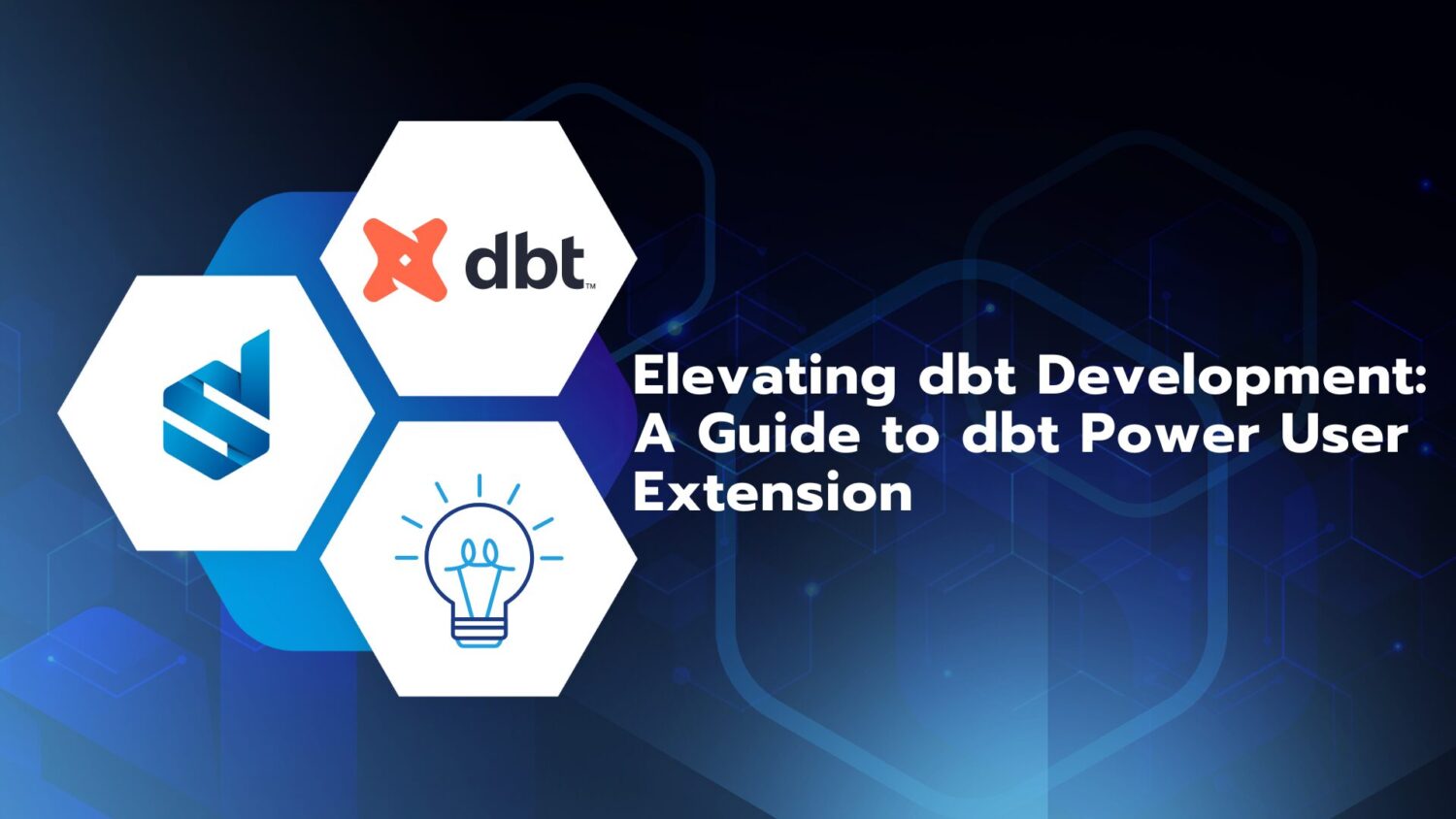Organizations are increasingly reliant on data warehouses to store, manage, and analyze vast amounts of information. However, the success of a data warehouse hinges not only on the quality of the data but also on the effectiveness of its underlying data model.
Effective data modeling lays the foundation for a robust data warehouse architecture, enabling organizations to extract valuable insights, make informed decisions, and drive business growth.
A well-designed data model serves as a blueprint for organizing and structuring data in a way that optimizes query performance, ensures data integrity, and facilitates meaningful analysis.
When discussing data modeling, three primary modeling techniques come to mind.
- Third normal form (3NF)
- Kimball’s dimensional modeling
- Data Vault modeling
Each approach offers unique advantages and is tailored to address specific challenges and requirements in different business environments.
In the upcoming sections, we will delve deeper into each of these modeling techniques to explore their strengths, weaknesses, and suitability for different business scenarios.
Example
Let’s consider a simple use case of an online retail store that sells products across various categories. The store processes orders from customers, tracks inventory, and works with multiple suppliers.
Use Case Details
- Customers place orders for products.
- Each order can contain multiple products.
- Products belong to categories.
- Products are supplied by suppliers.
Based on this use case, let’s outline how the data models would look under each methodology: Data Vault, 3NF, and Dimensional Modeling.
Third normal form (3NF)
Third Normal Form (3NF) is a fundamental principle in database schema design, aiming to optimize the structure of databases by ensuring that data is stored in a way that minimizes redundancy, guarantees data integrity and reduces dependency anomalies. Originally introduced by Edgar F. Codd, 3NF has become a cornerstone of relational database theory, focusing on the elimination of transitive dependency from tables beyond the basic requirements of the First and Second Normal Forms.
Key concepts
In 3NF, data is organized by concept (e.g. customer), with each concept allocated its own table. This normalization form mandates that every non-prime attribute must be directly reliant on the primary key, avoiding dependence on other non-prime attributes. Relationships between tables hinge on the primary keys, which are incorporated as foreign keys in related tables, ensuring structured and efficient data organization.
Originally, the principles of 3NF were applied primarily to operational databases, focusing on transactional integrity and data normalization for day-to-day business operations. However, Bill Inmon, the “father of data warehousing,” has been instrumental in extending the relevance of these normalization principles to the realm of data warehousing and business intelligence. Although Inmon’s contributions are more closely tied to the architectural and managerial aspects of data warehouses, he underscores the significance of maintaining rigorous normalization standards, like 3NF, in ensuring data within warehouses remains consistent, accurate, and readily accessible. His advocacy for structured data storage and retrieval methodologies highlights the critical role of normalization, not just in operational databases but also in the strategic design of data warehouses, blending the operational and analytical aspects of data management.
Example
3NF Model
Tables:
Customers(CustomerID, Name, Address, Email)Orders(OrderID, CustomerID, OrderDate, ShippingAddress)Products(ProductID, Name, Price, StockQuantity, CategoryID, SupplierID)Suppliers(SupplierID, Name, ContactInfo)Categories(CategoryID, Name, Description)OrderDetails(OrderDetailID, OrderID, ProductID, Quantity)
Advantages
- Data Integrity
By eliminating redundancy and storing data in a structured manner, Inmon’s 3NF technique helps maintain data integrity. This ensures that data remains accurate and consistent throughout the database. - Reduced Redundancy
Normalization minimizes data redundancy by storing each piece of information in only one place, thereby optimizing storage space and improving data consistency. - Simplified Updates
In a normalized database, updates and modifications to the data are typically easier to implement since changes are made in fewer places, reducing the risk of inconsistencies.
- Data Integrity
Disadvantages
- Increased Complexity in Database Design
Achieving 3NF can significantly complicate the database design process, especially for large and complex databases. The stringent requirements for eliminating redundancy and ensuring direct dependency on primary keys often result in numerous tables with complex relationships. This complexity can make the database schema more difficult to understand and manage, especially for those new to database normalization principles. - Performance Overhead for Queries
Databases normalized to 3NF may experience performance issues, particularly in scenarios requiring the retrieval of data spread across multiple tables. The necessity to perform multiple table joins to assemble related data can lead to slower query responses, especially as the volume of data grows. This performance overhead is a crucial consideration in high-transaction environments or where real-time data access is essential. - Potential for Under-Optimized Data Access Patterns
While 3NF aims to eliminate redundancy and ensure data integrity, it can inadvertently lead to under-optimized data access patterns in certain applications. For example, analytical processes that require frequent access to data aggregated from multiple tables might find that the normalization into 3NF hampers performance, necessitating additional data restructuring or denormalization to meet performance benchmarks. This tension between normalization for integrity and the practical needs of data access can lead to additional work in optimizing data access paths.
- Increased Complexity in Database Design
Kimball's dimensional model
Ralph Kimball’s approach focuses on query performance and user accessibility, prioritizing simplicity, and ease of use. Dimensional modeling employs concepts such as fact tables, dimension tables, and star schemas to organize data in a way that facilitates intuitive querying, reporting, and data analysis. By denormalizing data and optimizing for analytical queries, Kimball’s dimensional modeling approach enhances user productivity and enables faster decision-making.
Key Concepts
- Fact Tables
These central tables store quantitative data (facts) and are surrounded by dimension tables. Fact tables typically contain numerical measures or metrics, such as sales revenue or inventory quantities. - Dimension Tables
Dimension tables contain descriptive attributes that provide context to the facts in the fact table. These attributes represent the various dimensions along which data can be analyzed, such as time, geography, or product categories. - Star Schema
A common dimensional modeling schema where a central fact table is surrounded by dimension tables, resembling a star shape. This schema simplifies querying by allowing users to easily navigate between dimensions and facts.
- Fact Tables
Example
Dimensional Model
Fact Table:
FactOrders(OrderID, DateKey, CustomerKey, ProductKey, CategoryKey, SupplierKey, Quantity, TotalPrice)
Dimension Tables:
DimCustomer(CustomerKey, Name, Address, Email)DimDate(DateKey, Day, Month, Year, Weekday)DimProduct(ProductKey, Name, Price, CategoryName, SupplierName)DimCategory(CategoryKey, Name, Description)DimSupplier(SupplierKey, Name, ContactInfo)
In the Dimensional Model, product information is flattened into the DimProduct table, including category and supplier details, to simplify queries. The FactOrders table captures transactional data, with foreign keys linking to dimension tables, facilitating efficient analysis.
Advantages
- User-Friendly
Dimensional models are designed to be intuitive and easy to understand, making them accessible to business users. The structure closely mirrors real-world decision-making processes, enabling end-users to query the data efficiently and create reports without deep technical knowledge. - Optimized for Read Queries
These models are optimized for fast data retrieval, making them ideal for reporting and analysis. The design allows for efficient aggregation and summarization, which is crucial for performance in business intelligence applications. - Flexible and Scalable
Kimball’s approach to dimensional modeling supports incremental development, meaning that new data dimensions or facts can be added to the warehouse with minimal impact on the existing structure. This flexibility facilitates the evolving needs of a business without requiring a complete redesign of the warehouse.
- User-Friendly
Disadvantages
- Data Redundancy
To achieve query efficiency and simplicity, dimensional modeling often involves denormalization, which can lead to data redundancy. This redundancy requires additional storage and can complicate data management tasks, such as data updates and integrity maintenance. - Complex ETL Processes
The process of transforming and loading data into a dimensional model can become complex, especially when dealing with large volumes of data from diverse sources. Ensuring data quality and consistency across the dimensional model requires sophisticated ETL (Extract, Transform, Load) processes and tools. - Potential for Inconsistent Historical Data
Dimensional models can face challenges in accurately handling historical data, particularly when changes occur in the business dimensions (like changes in a product’s category). Techniques such as slowly changing dimensions (SCDs) are used to manage this, but they can add complexity and may not always perfectly preserve historical context.
- Data Redundancy
Data Vault
Data Vault modeling, a brainchild of Dan Linstedt, represents a significant evolution in the approach to data warehousing design, specifically tailored to meet the demands of modern, complex data ecosystems. At its core, Data Vault modeling is grounded in the principle of unified decomposition, which breaks down data into its simplest, most granular elements, namely business key, details and relations. This methodological shift is designed to enhance scalability, flexibility, and traceability across the data warehousing landscape.
Key concepts
- Hub tables serve as the backbone of the model, focusing on unique business keys that represent core business concepts (such as customers, products, or employees). These tables ensure a stable reference point for business entities.
- Satellite tables attach to hubs and links, providing descriptive details (attributes) about the entities in hub tables or the relationships in link tables. These tables capture the changes in data over time, facilitating a rich historical context.
- Link tables are designed to model the relationships between entities stored in hub tables. They enable the representation of complex, many-to-many relationships and are pivotal for capturing the interconnectedness of business entities.
Example
Data Vault Model
Hub Tables:
H_Customer(CustomerID, CustomerKey)H_Order(OrderID, OrderKey)H_Product(ProductID, ProductKey)H_Supplier(SupplierID, SupplierKey)H_Category(CategoryID, CategoryKe
Link Tables:
L_Customer_Order(CustomerID, OrderID)L_Order_Product(OrderID, ProductID)L_Product_Supplier(ProductID, SupplierID)L_Product_Category(ProductID, CategoryID)
Satellite Tables:
S_Customer_Details(CustomerID, Name, Address, Email)S_Order_Details(OrderID, OrderDate, ShippingAddress)S_Product_Details(ProductID, Name, Price, StockQuantity)S_Supplier_Details(SupplierID, Name, ContactInfo)S_Category_Details(CategoryID, Name, Description)
Advantages
- Scalability
Data Vault architectures are designed to scale horizontally, allowing organizations to seamlessly integrate new data sources and accommodate growing volumes of data. - Flexibility
The modular structure of Data Vault models enables incremental updates and changes without disrupting the entire system. - Traceability
Data Vault models provide a comprehensive audit trail through the use of hub tables, satellite tables, and link tables. This traceability ensures that data lineage is maintained, allowing organizations to track data back to its source and adhere to stringent governance requirements. - Automation
Data Vault is designed to be automated. Our preferred automation tool is VaultSpeed.
- Scalability
Disadvantages
- Complexity in Implementation and Management
The modular structure of Data Vault, with its hub, satellite, and link tables, can lead to a complex implementation process. This complexity is not just in terms of database design but also extends to the maintenance and querying of the data warehouse. Understanding and navigating this complexity requires specialized training and expertise, which can be a barrier for teams unfamiliar with Data Vault principles. - Increased Storage Requirements
Due to its design, which emphasizes granularity, auditability, and the capturing of historical changes, a Data Vault-based data warehouse can require significantly more storage space than traditional models. Each piece of data, including historical changes, is stored, leading to larger volumes of data that need to be managed and stored efficiently. - Performance Considerations for Querying
The normalized structure of Data Vault, while beneficial for data integrity and change tracking, can lead to performance challenges when executing complex queries. The need to join multiple hub, satellite, and link tables to retrieve a comprehensive dataset can result in slower query performance compared to more denormalized models, particularly for large datasets. - ETL Complexity
Extract, Transform, Load (ETL) processes can become more complicated with Data Vault modeling. The separation of data into hubs, satellites, and links requires a more sophisticated ETL strategy to ensure that data is accurately loaded into the correct structures. This can increase the development time and effort required to implement and maintain ETL processes.
- Complexity in Implementation and Management
Choosing the right model for your needs
The selection of the appropriate data modeling technique is crucial for building a robust data architecture that meets the specific requirements of your organization. It’s essential to understand that the choice largely depends on the architecture of your data, the complexity of the data being managed, and the strategic objectives of your business.
- Inmon’s 3NF is renowned for ensuring data integrity and reducing redundancy through meticulous normalization. It’s particularly effective for managing structured data within the data warehouse’s integration layer. Here, data from various sources is consolidated, standardized, and historized. However, due to its complex query structures, 3NF is less suited, if at all, for use as a presentation layer directly accessed by end-users.
- Kimball’s Dimensional Modeling shines as a presentation layer, designed to provide data in a format that closely aligns with business understanding. It excels in optimizing query performance and enhancing user accessibility, making it ideal for analytical queries where speed and simplicity are key. Yet, it’s important to note that this model may compromise on data integrity to achieve its goals and is not suitable as an integration layer due to the extensive transformations it employs and its close alignment with business perspectives, which could hinder maintainability.
- Data Vault Modeling stands out for its emphasis on scalability, flexibility, and traceability, addressing the challenges of integrating diverse data sources and adapting to evolving requirements. Like 3NF, it is tailored for the integration layer, optimizing the process of data ingestion and historical data management but presenting complexities in direct data retrieval for end-user consumption.
- Inmon’s 3NF is renowned for ensuring data integrity and reducing redundancy through meticulous normalization. It’s particularly effective for managing structured data within the data warehouse’s integration layer. Here, data from various sources is consolidated, standardized, and historized. However, due to its complex query structures, 3NF is less suited, if at all, for use as a presentation layer directly accessed by end-users.
Considerations for Selection
- Organizational Requirements
Assess the balance between the need for data integrity, query performance, and the system’s ability to scale. This assessment will guide the choice of the modeling technique. - Data Complexity
The structure, relationships, and variety of data at hand should influence the modeling decision. A technique that can adeptly handle the organization’s data complexity is crucial. - Business Objectives
The chosen data modeling approach should align with and support the company’s strategic goals, whether that be in agility, compliance, or analytical depth.
- Organizational Requirements
Leveraging Hybrid Approaches
A one-size-fits-all model rarely exists in the nuanced landscape of data warehousing. Thus, a hybrid model that incorporates elements from different techniques can often provide a more tailored solution. For example, employing Inmon’s 3NF model for the integration layer ensures data integrity and comprehensive historization. Simultaneously, adopting Kimball’s dimensional modeling for the presentation layer can make analytical data more accessible and understandable to business users.
Conclusion
In summary, choosing the right modeling technique involves assessing organizational needs, considering data complexity, and aligning with business objectives. Organizations can leverage hybrid approaches and adapt their strategies over time to ensure their data modeling efforts remain effective and relevant.
Example
These simplified models illustrate the foundational structure of each approach, tailored to the retail use case. The Data Vault Model emphasizes flexibility and auditability, the 3NF Model focuses on normalization and data integrity, and the Dimensional Model is optimized for query performance and user accessibility.





